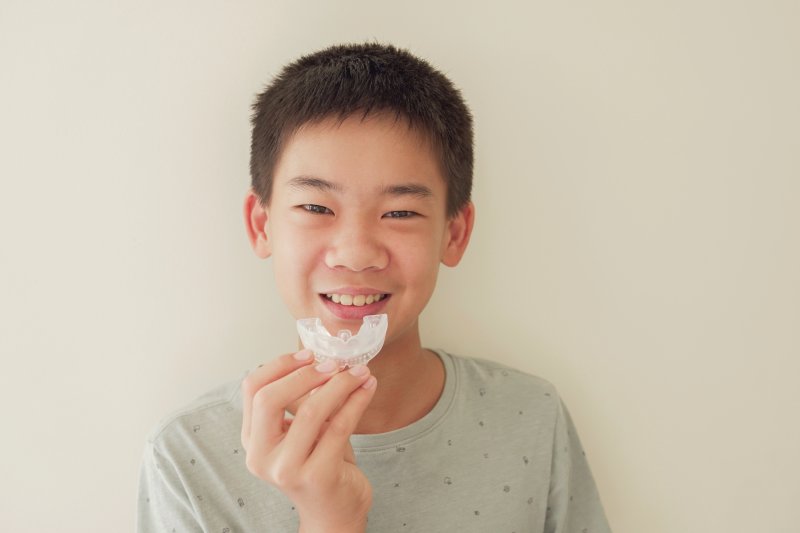
A mouthguard is a removable oral device that can protect your son or daughter’s mouth and minimize their risk of dental injuries when playing contact sports. It can also be used to manage temporomandibular joint disorders (TMJ) and reduce teeth grinding at night. It’s crucial to maintain the cleanliness of your child’s mouthguard. Without regular cleaning, the bacteria in their mouth can build up on the mouthguard, causing infection or bad breath. Here is what you can do to properly clean your child’s mouthguard.
What You Can Use for Daily Mouthguard Care
Thankfully, your home probably already has some supplies you can use to clean your child’s mouthguard! Here’s what you might have already at home:
- Toothpaste – After rinsing the mouthguard with cool water, use a designated soft-bristled toothbrush and non-abrasive toothpaste to gently clean each surface.
- Mouthwash – Dilute a cap of alcohol-free mouthwash with water until the mouthguard is covered entirely. Let it soak for 30 minutes.
- Soap – Use a mild, alcohol-free kind such as antibacterial, castile, or dish soap and a soft-bristled toothbrush.
- Baking Soda – In a clean bowl, combine equal parts baking soda and water into a paste. Use a soft-bristled toothbrush to clean the mouthguard with the paste.
After you’re done cleaning the mouthguard, rinse is again under cool water and let it dry completely. These methods are all appropriate for daily cleaning. However, once in a while, you should deep clean your child’s mouthguard to prevent bacterial growth.
How Often a Mouthguard Should Be Cleaned
You should clean your child’s mouthguard after every use.
Stronger cleaners such as over-the-counter denture cleaners or hydrogen peroxide and vinegar are best for deep cleaning and should be used at least once a month.
- Hydrogen peroxide and vinegar – Rinse the mouthguard in cool water and then place in a clean glass. Add enough vinegar to cover the mouth guard and let it soak for 30 minutes. Rinse the mouthguard and glass with cold water. Put the mouthguard back in the glass and cover it in hydrogen peroxide. Finally, rinse and let it dry.
- Over-the-counter chemical cleaners – Follow the instructions on the packaging. The typical method is to soak the mouthguard in the cleaner, rinse it in cool water, brush the mouthguard in the solution, and then rinse and let dry.
Over-the-counter cleaners may have synthetic fragrances or dye, so if you know your child has a sensitivity to those ingredients, you should opt for different cleaning methods.
What’s the Best Way to Store a Mouthguard?
Make sure you’re storing your child’s mouthguard in a durable vented container when they are not using it so it’s completely dry. You should clean the storage container every few days while they are using the mouthguard. High temperatures can warp the mouthguard, so avoid exposing it to hot water, air, or excessive sunlight.
About the Author
Casper Children’s Dental Clinic is the longest-running pediatric clinic in the central Wyoming area and has been led by two generations of Paulsons for over 35 years. Dr. Ryne S. Paulson offers custom mouthguards so your little athlete can be set up for success. If you’re interested in a mouthguard for your son or daughter, you can contact Dr. Paulson through his website or by phone at (307) 266-1997.
